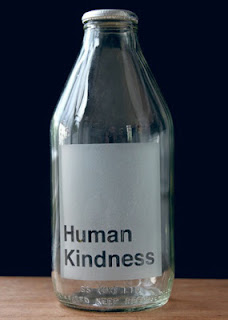We had to make our own fun, and, as I look back on 18 years of subzero Christmas holidays with the girls, I think we did a credible job. The start of our season was always the trip downtown to see the Dayton’s-Marshall-Field’s-Macy’s Santa (loudly teaching them the lyrics to “Downtown” on the drive there, coaching them to sound like a couple nascent Petula Clarks). The visit was traditionally capped by dinner in the Oak Room, which, in the early days, felt like fine dining with a time bomb at the table (“She’s gonna blow any minute, cap’n!”). Tableside boredom was averted by the presentation of a “Santa Day” gift: new Christmas color coloring books and a box of sharp crayons. Each meal included several trips to the enormous 12th floor ladies’ room, less for reasons biological than for the joy of lounging on the leopard-print couches, observing one’s fabulous self in the multiple curved mirrors, and generally trying to approximate the behavior of Hollywood starlets who had somehow been transplanted to Nicollet Mall.
There were other holiday outings too, clearly the result of plenty of desperate Mom research into the cheap, fun and worthwhile. We made annual trips to holiday plays like “The Best Christmas Pageant Ever.” I hosted many gingerbread cookie-baking afternoons, with no-holds-barred on the frosting and sprinkles. We’d string cranberries and popcorn to decorate the (then) tiny boulevard pine tree at the corner. We used to make an official procession of the Transfer of the Garland, complete with candles and carols. I would take photos and demand that the children hop about like Peanuts’ characters.
For many years, the one unmovable day on our calendar was the first Saturday in December, when we made gingerbread houses at the Fuller Park Community Center. Every year we picked up a moving tumbleweed of friends and buddies, so we usually filled a table. Together, we created enough houses to be the slumlords of our own confectionary-laden tenaments.
I can remember many details of those events. We were always the first to arrive, usually about a half-hour early, because no one in our savvy group wanted to miss out on “the good candy.” We’d wait outside the door to the multipurpose room while the staff finished their preparations.
It was an event that could not have run more smoothly if it had been planned by Martha Stewart, the White House and Captain Kangaroo. Everything was well-thought-out and easy to navigate. The staff had always made the houses in advance, and a perfect mountain of residences would be stacked and ready in one corner. There was quiet Christmas music on a boom box. Hot cider and – coals to Newcastle – cookies were provided. A long table included tiny bowls of every possible candy decoration, in every color imaginable. Back in the kitchen, there were always a couple of sticky staff people cheerfully whipping up another batch of the mortar-icing.
The kids loved just about everything related to this annual endeavor, including the welcoming, no-rush atmosphere of the staff. Think of standing in line for three hours to see Santa at some odious suburban mall, while the mom behind you shrieks to her snotty offspring, “I’ll give you something to cry about,” and you hear the top-volume version of “The Little Drummer Boy” for the ten thousandth time.
Now think of the opposite, and that’s what this afternoon was. All was calm, all was bright. There was no need for performance anxiety, nothing to preserve for posterity or put in the Christmas letter to the relatives. Even better, there was nothing to go into debt or find a storage space for.
This was just a chance to sit with friends and make something pretty, or silly, or festive, or fun. It was a rare opportunity to sample candy until your teeth hurt, and then sample a little more. It was a self-paced day that didn’t require a bell to ring or Santa to declare something for you to know when it was over. When you were happy with the way everyone’s houses looked, you cleaned up the newspaper off the table, put on your coats, and, on your way out the door, said thank you to the nice
ladies who ran the event, unless they were already
washing the world’s stickiest dishes, back in the center’s tiny kitchen.
You carried the houses home, displayed them somewhere high so the dog didn’t eat them, and, on the first day you went back to school, your mom dumped them in the compost. No worries. You can make another one next year.
Or not. We participated in this neighborhood event for so long that a truly surprising thing happened – our kids grew up. One year we were the darling family with the sweet table of tots, and the next, we were that strange group of large people who took up an inordinate amount of space. It was so embarrassing one year that, the following December, I hit upon the idea of adding shills to the mix, and recruited a couple of friends' young kids to accompany us. While the story we told was that all these massive, hulking teens were there to help the party’s two kindergarteners, the big kids insisted on making their own houses, usually with references to reindeer shoot outs, laser-tagged snowmen and bad, bad Santas.
.jpg) I took pictures at that last event. Maybe I knew, somehow, that it really was the last. The next year, it overlapped with something on the holiday schedule, and the next year as well. Then we were travelling to China over Christmas to visit Emma during her exchange program, and no one had time for gingerbread.
I took pictures at that last event. Maybe I knew, somehow, that it really was the last. The next year, it overlapped with something on the holiday schedule, and the next year as well. Then we were travelling to China over Christmas to visit Emma during her exchange program, and no one had time for gingerbread.Mary Katherine and I were driving home by Fuller Park a few weeks ago, and she began reminiscing about those Gingerbread House days. “Can we do it again?” she asked. “Sure,” I said, but when I called, the park told me that the person who had always run the event was no longer working there, and they were not happening at Fuller any more.
I felt a pang of guilt. I remembered that woman who ran the event. She had a sweet, open face and an incredibly calm demeanor that must have hidden very well what a pain in the ass it was to glue together hundreds of damn houses, get the cider heated to the perfect temperature, put on the calm Christmas carols, not the creepy ones, and then spend most of the afternoon making frosting and cleaning up. I remember that I did write a thank you letter one year, saying how much our family and friends appreciated it. Still, that woman thought that all she did was set up an event at a community center. And, I am here to testify, she did so much more.
Now I’ll never have a chance to say thank you to her again, or to scrounge around for an at-liberty five-year-old to serve as our beard. Like so many things about the times that we make magic together, whether part of a holiday or not, this perfect little place to create something sweet can never be visited again. And all I can do now is wish that I’d had a chance to tell everyone at Fuller Park that, for our family, it was never just a gingerbread house. It was so much more.
.jpg)
.jpg)
.jpg)
.jpg)

.jpg)
.jpg)

.jpg)
.jpg)














